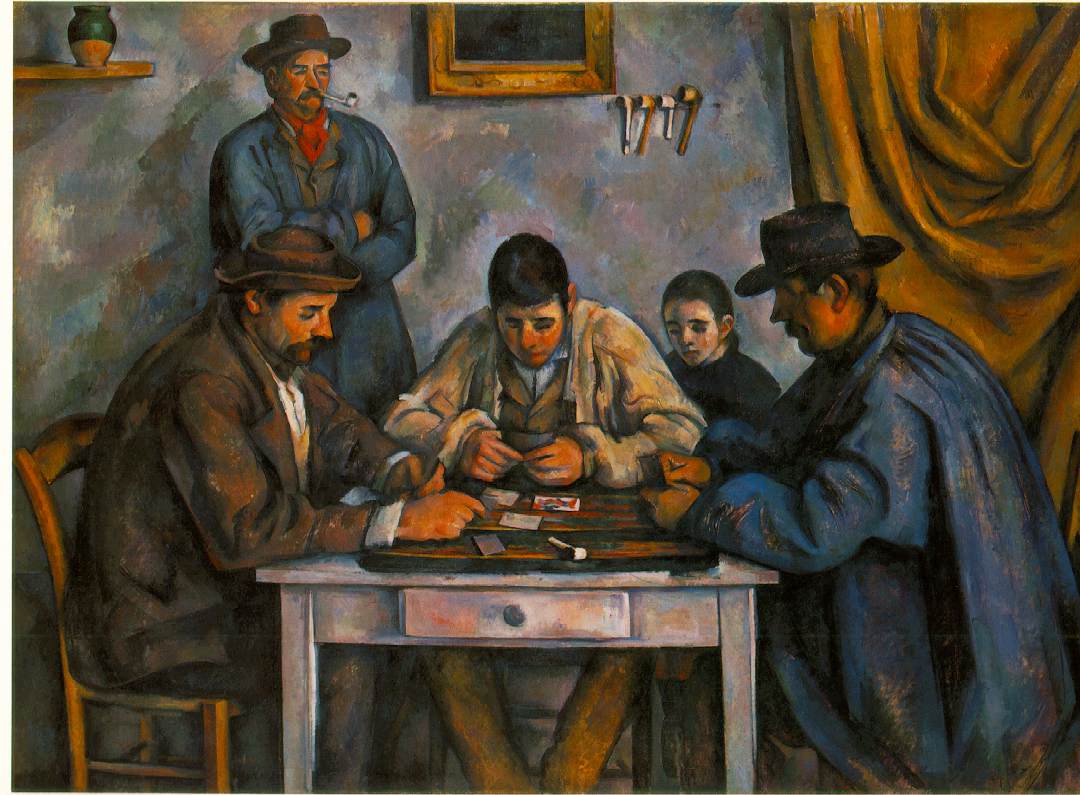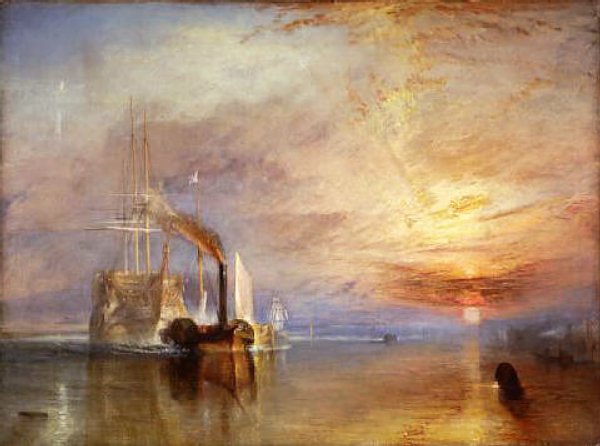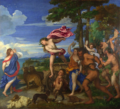In this edition of Spotlight, we are joined by Sheffield-based artist Mark H. Wilson.
Mark Wilson knows only too well the breathtaking and hypnotic power that light has had on many artists before him. Before Mark had even begun his schooling, he was exposed to some of the great masters, with the images of Cezanne, Gauguin, and Turner being strongly present in his recollections. Influenced by his art-teacher father and painter uncle, he began to understand early on how light does not just illuminate the scene – it is an active participant in the drama. Marks own unique methods of capturing the atmospheric effect of light, be it glistening over the forest floor at dawn, or beaming resplendently through dark clouds after a storm, are gaining him his own kind of notoriety. This journey so far has taught Mark that just like for his 18th-century predecessors, the road to becoming a professional artist is by no means an easy one. We caught up with Mark at his Sheffield winter studio:
1) Firstly, thank you for joining us Mark. So tell us, when did you first realise that you were meant to be an artist? What was the road like leading to that decision?
I guess that I was very young when I first realised that I wanted to be an artist. My father taught art and taught me the basics and our house had prints of paintings on the wall. The ones I particularly remember are “The Card Players” by Cezanne, “The Laughing Cavalier” by Hals, and works by Gauguin, Turner and Constable. My Uncle Frank was a talented painter and we had some of his original paintings on the wall, which I could look at for hours. I went to see a Van Gogh exhibition at the age of 5 or so and that has had an everlasting effect on me, so I was introduced to great art at a very early age.

2) A lot of your work highlights the brilliant interplay that colours in nature can produce. Why does light inspire you?
Light and colour are everything in my work. As Turner said; “the sun is God.” I am inspired by the constantly changing sky around where I live. I love storm skies with the sun trying to break through the clouds. I can look at what some people just call a grey sky and find so much colour in there, blue greys, pink greys combined with sunlight are what excites me. Blue skies are nice but a bit boring. I always try and watch the sunrise and sunsets over the city, my favourite times of day, as each one is so different and that’s where I get my colours.
I am inspired by the constantly changing sky around where I live… I can look at what some people just call a grey sky and find so much colour in there..
3) Why did you choose Sheffield as a base, and what does it offer to the
working artist?
I was born in Sheffield and have been back here for 10 years or so. I have found Sheffield has much to offer the working artist. Upon my return here I began by exhibiting in local church exhibitions, then in the Great Sheffield Art Show, the biggest art show in North England. I still show in this plus various Open Art Exhibitions, where I have won awards; an event called Art in the Botanical Gardens; also an open studio event (Open Up Sheffield), where you open your home over two weekends for the public to visit you. I keep my home as a permanent gallery, which attracts a steady stream of customers. There are also numerous art fairs in the region that I show at. So I would say there are numerous opportunities for artists at any level to get their work shown in and around Sheffield.
4) How do you think success can be defined artistically?
There are a number of factors that I would define as being a success artistically. Obviously it’s really rewarding when someone likes my work so much they want to buy it, and having to make a living through painting this needs to happen. It is also rewarding to receive awards for my paintings. Last year I won three awards, a commended at the South Yorkshire Open, a highly commended at the Rotherham Open and a Gold Award for my display at Art in the Botanical Gardens. It is also good to hear from young people and students asking me about my work for art projects and theses.
I find it satisfying to know that people want to know about me and my work. I also like to keep an eye on the stats on my website, knowing that my work is being seen all over the world. I do have my paintings in many private collections abroad including Japan, Australia and the USA. and that is a nice feeling. Overall though, I would say the best thing is making a living by doing what I want to do, difficult as it is at times.
I find it satisfying to know that people want to know about me and my work. I also like to keep an eye on the stats on my website, knowing that my work is being seen all over the world.
5) Tell us about ‘Bluebell Vista’. What steps did you take to so adeptly
capture this scene?
My ‘Bluebell Vista’ paintings are the latest in a series of woodland paintings that I began some ten years ago. My favourite times of the year for walking in the woods are autumn and when the bluebells are out. I just love the vibrant colour, especially in the morning and evening with the low lying sunlight sweeping through the trees casting long shadows and a shimmer through the leaves. I spend a long time waiting for just the moment I wish to capture and to do this I use my camera and also make quick pencil studies. I try to veer away from a traditional, twee depiction of a bluebell wood and attempt to create a more contemporary, painterly image creating depth, texture, and an impression of one particular moment in time.
I just love the vibrant colour, especially in the morning and evening with the low lying sunlight sweeping through the trees casting long shadows and a shimmer through the leaves.
6) How would you describe your following in Sheffield? Could you tell us
what a typical buyer might be like? (For example, have they heard of your
work prior to visiting your gallery?)
When I first started selling my work in Sheffield, I never really knew who was buying it. I have sold so many paintings over the years and have no idea where they all are, and I kind of liked the idea of that. Over the past couple of years however, since selling my work through my home/gallery, and art fairs etc., I do actually get to meet the people who buy my paintings and these range from students who can maybe just afford to buy a study to retired people who have taken up art as a hobby and interest. I would say that the majority of my customers are aged between 30 and 55, professional people looking for something original, something that no-one else has with a contemporary feel, people with an interest in art & design.
7) Has there ever been a difficult period for your through your art career? How did you get through it?
I have had many difficult periods. Sometimes it’s got me down, I’ve become despondent, wondering what the point to it all is and I’ll never be a Picasso and all that stuff. I’ve taken unrelated, part-time jobs over the years too, just to pay the bills. However, what has given me a focus and confidence in my art was meeting my wife eight years ago. She’s got belief in what I do and egged me on, changed my approach and my presentation, got me to be more business minded (a difficult task for a lot of artists), given me deadlines to work towards, talk to people, enthuse about myself, network, all that malarkey. All in all, a more professional approach. So far so good.
8) How do you keep yourself motivated?
The main thing that keeps me motivated is wanting to get better and better at painting. I want to move on all the time, learning from everything that I’ve done. I want every painting to contain a new discovery. I want to avoid repetition. I feel that I am developing but have far to go and much to learn and one day I may create the masterpiece I envisage in my imagination. I tell myself; ‘keep painting and the magic will come’, and my motto is: ‘If you don’t change your direction, you may end up where you were headed.’
Thankyou Mark for your engaging and personal insights into your work. We wish you every success with your work in 2008. You can visit Mark’s website at www.markhwilson.co.uk. We’ve found a quote which we think embodies the journey of every artist:
‘It is only when we are no longer fearful that we begin to create.’
Joseph Mallord William Turner (1775-1851)









